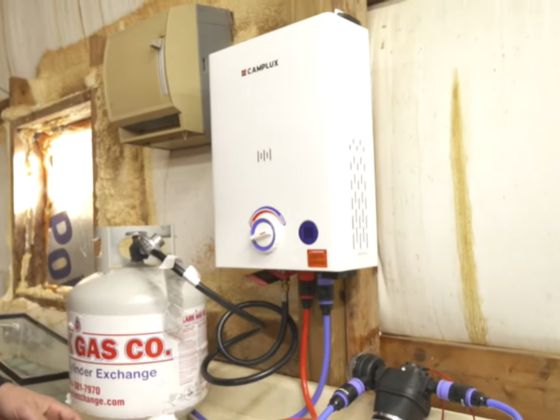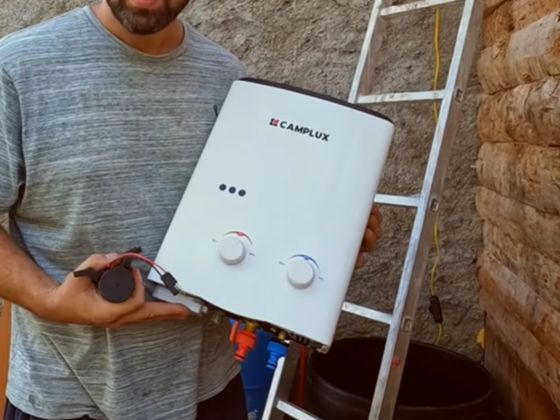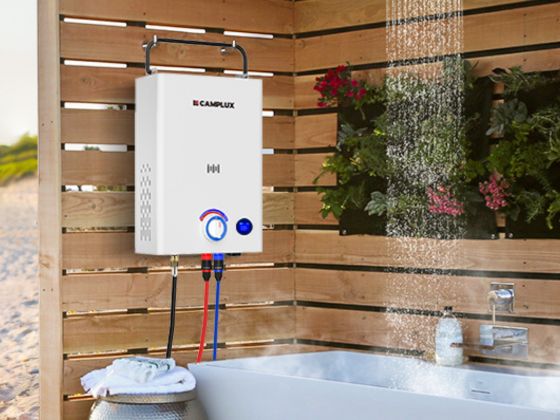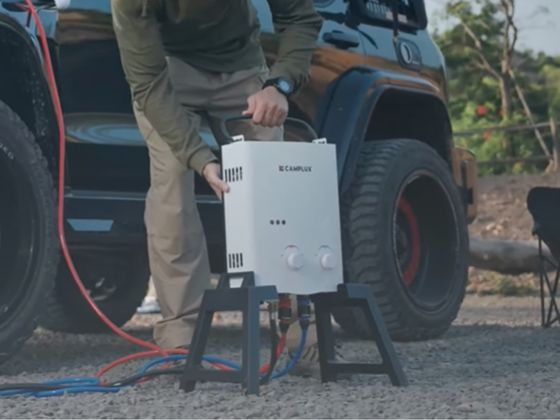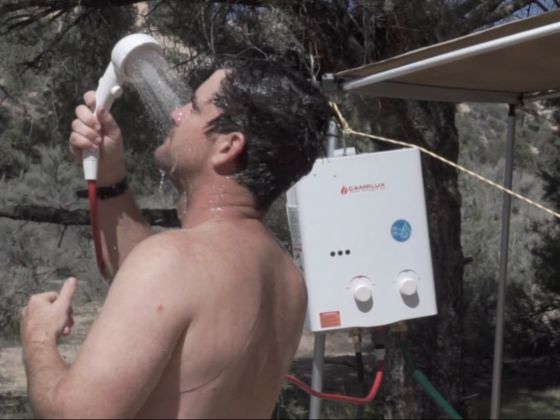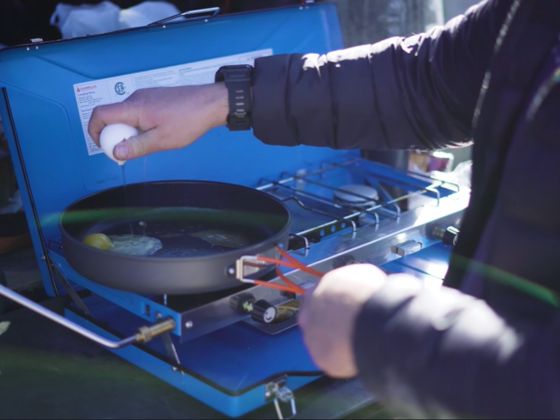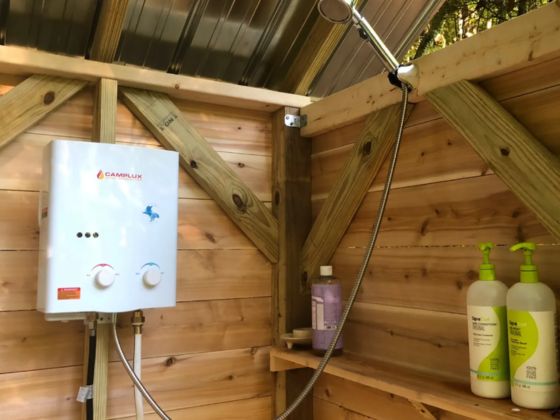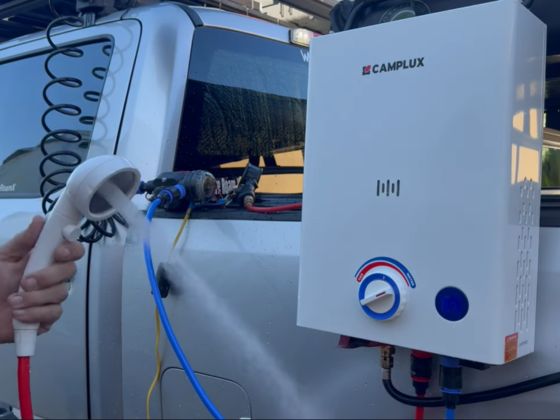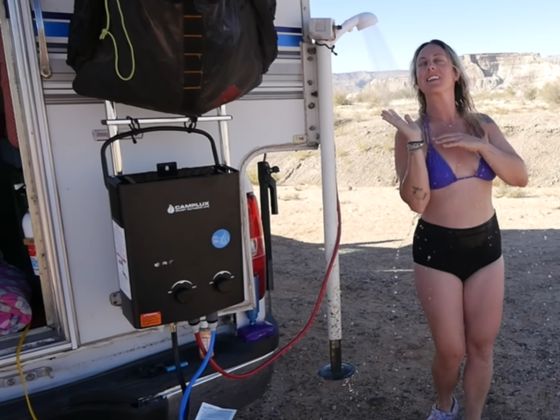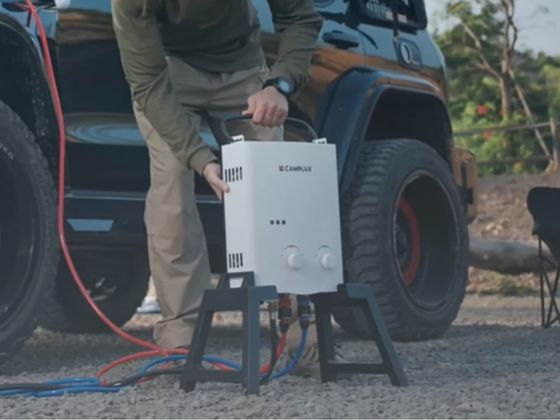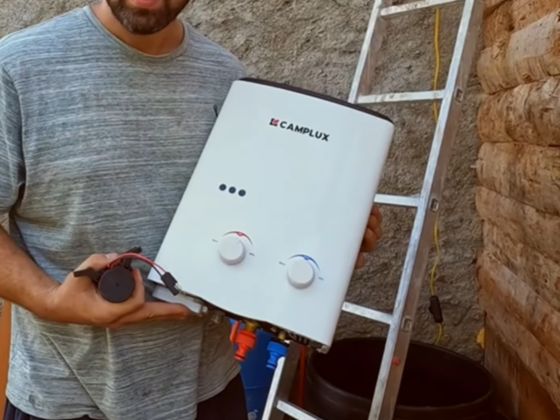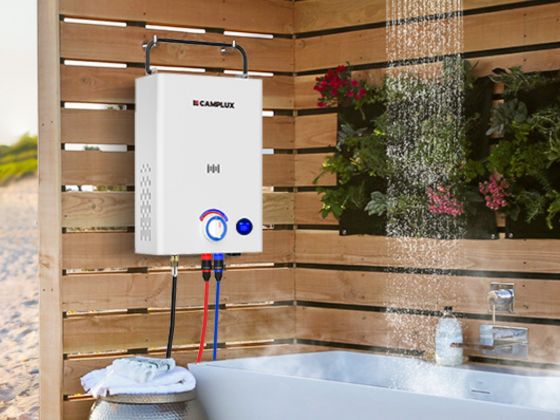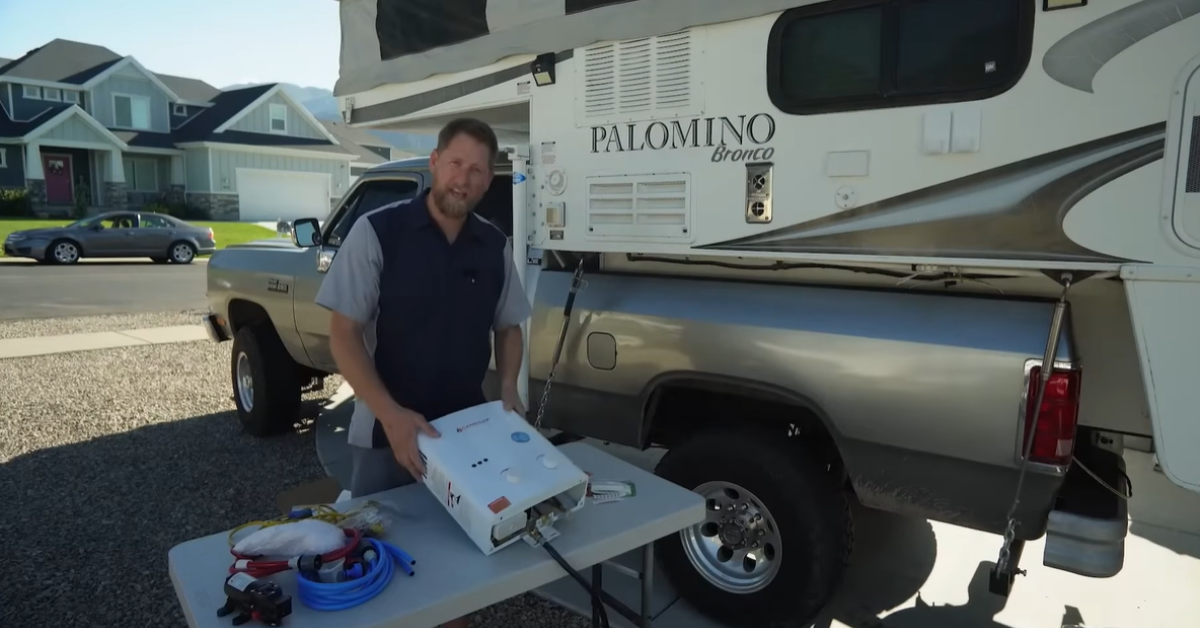Australian winters aren't exactly Arctic, but when that cold southerly swings through and overnight temps dip, your outdoor gas water heater can get a bit fussy. Lower inlet-water temperatures mean the heater has to work harder to reach your preferred shower temp. Add wind chill, frost on hoses and regulators, and the fact many of us use these units in exposed spots—on the patio, at the campsite, beside the caravan—and it's no surprise performance can wobble.
This guide is written specifically for portable outdoor gas water heaters used in open-air settings across Australia. We'll keep it practical and light on jargon: quick wins first, then brief explanations so you know why each step helps. We'll also sprinkle in a bit of Aussie flavour—nothing over the top—because you're likely reading this on the back deck, cuppa in hand, wondering why the shower feels lukewarm this morning.
Safety first: Portable gas water heaters are for outdoor, well-ventilated use only. Never operate in a tent, van interior, enclosed awning, garage, bathroom, or other enclosed space. For gas work beyond routine checks (e.g., swapping regulators, hard plumbing, or modifying gas lines), use a licensed gasfitter/plumber.
The 60-Second Winter Quick Check (Do This Before Anything Else)
When the water runs cooler than you'd like, start with these fast tweaks. Most users see an immediate improvement:
-
Trim the flow 10–20%. Turn the water flow down a touch before chasing higher temperature settings. Instantaneous heaters heat better with a slightly lower flow in winter.
-
Nudge the set temperature up a few degrees. Small moves are best—enough to offset colder inlet water without scald risk.
-
Shift the unit out of the breeze. Rotate the heater or place a low, open-sided wind baffle on the windward side. Do not obstruct the flue or exhaust path.
-
Check the LPG cylinder. Make sure it's upright, on a stable base, with the valve fully open and the regulator and hose free of visible frost build-up. If the bottle is near empty, swap it.
-
Take note of error lights/codes and power-cycle once. Turn the unit off, wait a few seconds, and restart per the manual.
These tiny adjustments often get things back on track. If you want the full story—and more reliability on cold mornings—read on.
Tune the "Winter Triangle": Flow × Temperature × Showerhead
Think of winter operation as a three-way balance.
1) Flow:
Lowering the water flow a fraction gives the heat exchanger more time to add heat. In cold weather, this simple tweak is your best friend. If the unit struggles to hold temperature, step down the flow first.
2) Temperature setpoint:
Raising the setpoint a few degrees can take the edge off freezing inlet water. Avoid cranking it way up; you'll waste gas and increase scald risk. The sweet spot is the lowest setpoint that feels comfortable when combined with a slightly lower flow.
3) Showerhead and aerators:
Very restrictive "eco" heads can misbehave with instant heaters; ultra-high-flow heads waste heat. Pick a middle-of-the-road head with an even spray, and clean your showerhead and tap aerators routinely—scale and grit reduce flow and create temperature swings.
Micro-preheat trick:
In winter, open the hot tap at a small flow for 10–20 seconds before ramping up. This "wakes" the heat exchanger and reduces the first minute of shivers. No dramas.
LPG in Cold Weather: Why Propane Beats Butane
Not all LPG behaves the same in winter.
-
Propane vaporises well at lower temperatures, providing steadier gas supply on cold mornings.
-
Butane struggles as temperatures drop, so appliances can starve for fuel even when the bottle isn't empty.
What to do:
-
Prefer propane (or LPG mixes with plenty of propane) in cool climates or frosty overnights (think Tassie, inland NSW/VIC high country).
-
Keep the cylinder upright on a dry, insulated base (timber mat or stand) rather than directly on cold ground.
-
If you're running a small bottle and see heavy frosting on the outside, that's a sign it's working hard to draw fuel. Consider a larger cylinder (e.g., 9 kg) or rotation between two bottles on big shower nights to maintain supply.
-
Inspect the regulator and hose: if they're wet and freezing in wind, move them out of direct airflow and keep them off the ground. Replace any cracked or perished hoses.
Never apply direct heat (flames, heaters, hot water) to a gas bottle—dangerous and illegal. A dry stand and shelter from wind is as far as you should go.
Give Cold Water Less Chance to Steal Your Heat
Winter makes your heater fight two battles: colder inlet water and heat loss along pipes.
-
Shorten hose runs where possible. Every extra metre is more surface to cool your water.
-
Insulate hot and cold hoses with foam sleeves or wrap. It's cheap, quick, and makes a surprising difference.
-
Use a simple inline filter on the inlet if you're drawing from tanks, jerricans, or creeks. Grit loves to block screens and showerheads.
-
Keep hoses off frosty ground and avoid sharp bends that pinch flow.
If you're using a pump with a water tank, check the pump's pressure and flow rating. In winter, a pump delivering a steady, moderate flow can stabilise temperature better than a weak or pulsing one.
Placement, Wind, and Rain: Protect the Flame—Don't Box It In
Your outdoor gas water heater needs air, but not a gale.
-
Choose open air with light shelter. A verandah edge, leeward side of a van, or a simple open-sided baffle reduces wind-outs while keeping the exhaust path clear.
-
Mind clearances. Keep the unit away from tent fabric, timber walls, or stored gear. Maintain manufacturer-specified distances around the flue/exhaust.
-
Rain resistant ≠ storm proof. Most portable units are splash-resistant, not submersible. Don't run them in driving rain or where spray blasts the burner area.
-
Stable footing. A flat, raised base prevents the unit tipping and keeps hoses and regulator out of puddles.
A little thought about wind direction and shelter goes a long way. If the flame is being bullied by a cross-breeze, reliability suffers.
Use Less Gas, Stay Just as Warm
Efficiency in winter isn't about shivering—it's about smart habits.
-
Micro-preheat: Start with a low flow for 10–20 seconds, then increase to comfort.
-
Shower sequence: If a few of you are washing in a row, space showers by a minute. That gives the exchanger and bottle a breather.
-
Don't over-mix: Let the heater do the heating. If you're mixing heaps of cold at the tap, you're forcing the unit to chase a moving target.
-
Leak patrol: A slow drip or a weeping connection wastes water and heat. Fix it early.
-
Right temperature, right away: Set the heater as close as possible to your target temp so you're not blending much at the tap.
Small tweaks, big wins—your bottle lasts longer and the shower feels more consistent.
Safety and Compliance in the Aussie Context
We'll be blunt because it matters.
-
Outdoor use only. Portable gas water heaters belong in open air with plenty of ventilation. Not in bathrooms, garages, caravans (inside), vans, or closed annexes.
-
Carbon monoxide is deadly. You can't see or smell it. Keep exhaust paths clear and never enclose the unit.
-
Soap-solution leak test: After connecting, brush or spray soapy water on joints. Bubbles = leak. Shut everything down and rectify before use.
-
Use components that meet local standards. Hoses, regulators, and fittings should comply with relevant AS/NZS requirements and be in good nick.
-
Respect fire bans and park rules. On Total Fire Ban days or in certain parks, gas appliance use may be restricted. Check local guidance.
-
Keep kids and pets clear. Hot metal, open flames (internally), and trip hazards—set up a "no-go" zone.
If in doubt, don't risk it. A quick chat with a licensed gasfitter can save you grief.
Scenario-Based Tips (Real-World Setups)
Camping / Car Camping
-
Pick a leeward pitch. Set up so the unit faces away from the prevailing wind.
-
Battery back-ups: Cold knocks alkaline cells around; stash a fresh set.
-
Short hoses, tidy runs: Keep the pump and heater close to the water source to reduce pressure drop.
Caravan & Camper Trailer
-
Edge of the awning, not inside. You want open air and clear exhaust.
-
Stable mount: Use a bracket or stand designed for the unit. No wobbly stacks of milk crates, thanks.
-
Bottle choice: If you're showering a few people nightly, consider a larger cylinder for fewer pressure dips.
Backyard Outdoor Shower / Pet Wash
-
Wind baffle + hose insulation: Two simple add-ons that make winter bathing less of a shock.
-
Drain-down after use: Don't leave water sitting in the unit or hoses overnight if frost is possible.
Remote Shed or Temp Worksite
-
Twin-bottle setup (manually swapped), not home-made heaters or improvised warmers.
-
Clearance and signage: Keep the area tidy, mark trip hazards, and brief everyone on "exhaust is hot, keep clear."
Low-Cost Upgrades That Pay Off in Winter
-
Foam insulation sleeves for hot and cold hoses (cheap, effective).
-
Collapsible wind baffle that shields the burner area without covering the exhaust.
-
Spare showerhead and tap aerator. When one clogs, swap it and clean the dirty one later.
-
Inline sediment filter for tank/creek feeds to protect the heater and your showerhead.
-
Larger LPG cylinder or rotation between two bottles if you're bathing a crowd.
None of these are flashy; they're just reliable ways to keep things steady when the mercury drops.
Simple Maintenance and Winter Storage
A tidy, de-gunked heater is a happy heater—especially when it's cold.
-
After each session: Turn the gas off at the bottle, let the unit run out of flame if your manual suggests, then shut down the water. Where frost is likely, drain the unit following the manual so residual water can't freeze and crack internals.
-
Weekly/fortnightly (heavy use): Rinse the inlet screen, showerhead, and aerators.
-
Descale as needed: In hard-water areas, follow the manufacturer's guidance for gentle descaling. Don't improvise harsh chemicals.
-
Hose and regulator check: Look for splits, abrasions, or stiffness. Replace at the first sign of trouble.
-
Long breaks: Drain down fully, disconnect hoses, dry, and store the unit under cover. Keep pests out and dust caps on.
These jobs take minutes and prevent the sort of failures that show up only when you're wet, cold, and muttering under your breath.
When to Call a Pro (or the Manufacturer)
Don't muck about with these—get a licensed gasfitter/plumber or the brand's support (Camplux) involved:
-
Persistent gas smell or failed soap-solution test (bubbles at a joint).
-
Repeated fault codes that return after a proper reset and basic checks.
-
Abnormal flame behaviour: sooting, yellow flame, "whoof" noises, or visible scorching.
-
Any modification beyond routine user service—regulators, fixed pipework, or non-standard fittings.
-
Impact, heat damage, or water ingress into the unit housing.
A short professional visit beats a long weekend ruined.
Regional Notes Across Australia
Australia is a big place; winters vary wildly.
-
Tasmania, high country VIC/NSW, SA hills: Expect frosts and very cold inlets; prioritise propane, hose insulation, and drain-down after use.
-
Coastal NSW/QLD: Gentler winters, but wind and salt spray can be pests. Keep hardware clean and out of direct gusts.
-
WA south-west: Wet and blustery spells—shelter the unit from driving rain and use a wind baffle while keeping the exhaust clear.
-
Inland regions: Crisp mornings and chilly nights make bottle size and wind protection extra important.
Adjust the tips above to your local conditions and you'll notice the difference.
Frequently Asked Questions (Outdoor Gas Water Heaters in Winter)
1) My LPG bottle gets frosty when we shower. Is that bad?
Some frosting is normal—it means the bottle is working hard as liquid LPG boils to gas. If pressure drops or the flame struggles, swap to a larger bottle, rotate between two bottles on busy nights, shelter the bottle from wind, and ensure it's on a dry, insulated base. Stick with propane in cold regions.
2) The unit starts hot, then swings cold, then hot again. Help?
Reduce the water flow slightly, clean the showerhead and inlet screen, and make smaller adjustments on single-lever mixers. Check that the gas bottle isn't near empty or icing up badly. Small flow changes are often the magic fix.
3) Can I run it under a gazebo or awning in the rain?
Only if the area is open-sided with clear exhaust and the manufacturer allows it. Never enclose the unit or run it where fumes could collect. Avoid driving rain and spray that can hit the burner.
4) Why does my ignition fail more often on cold mornings?
Cold air and wind make ignition fussier. Move the unit leeward, replace batteries in battery-ignition models, verify strong gas supply (full bottle, valve open), and reduce flow briefly to give the burner an easier start.
5) Should I switch from butane to propane in winter?
Yes—propane vaporises far better in the cold, providing steadier pressure. If your current canisters are butane-dominant, that could explain weak performance on frosty mornings.
6) Is it okay to use the heater in a bathroom with the window open?
No. Portable gas water heaters are for outdoor use only. Open windows don't guarantee safe ventilation. Stick to open-air setups.
7) Do I need to drain the unit every night?
If frost is on the cards, yes—follow your manual to drain residual water so nothing freezes and cracks. In milder climates, drain when the forecast dips or if you won't use the unit for a while.
8) Our campsite's pressure is low. Can I still get a decent shower?
Yes—keep hose runs short, clean filters, and choose a steady, moderate flow rather than chasing volume. That strategy lets the heater deliver a stable temperature with the pressure it has.
Final Word
Winter showers with a portable outdoor gas water heater don't have to be an exercise in stoicism. A little setup finesse—trim the flow, nudge the temp, block the wind (without blocking exhaust), keep hoses insulated, and feed the burner with propane—delivers warmer, steadier water with less gas. Throw in routine cleaning of filters and showerheads, drain the unit when frost threatens, and treat gas gear with the respect it deserves. Do that, and you'll sail through the chilly months with hot showers on demand—no fuss, no shivers, just a bit of steam rising into the cold morning air.

